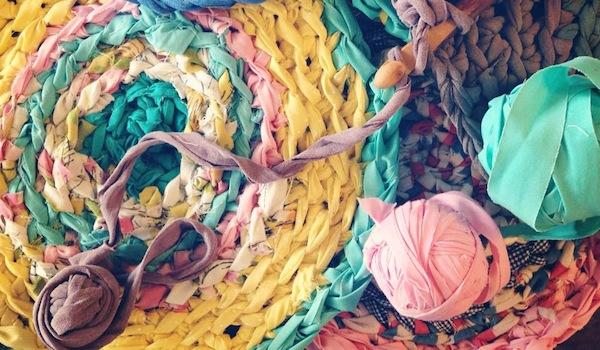
THE RAG RUG REVIVAL

Made from discarded strips of cloth, woven or crocheted into complex colourful designs, rag rugs were initially seen as thrifty solutions to keeping cold drafts at bay in the home. Especially in Britain throughout the 19th century, these rugs were seen as particularly ‘working class’ homeware, while across the pond in America they took on a much more prestigious standing well into the 20th century.

During the first half of the 1900s, fabrics for rag rugs were collected, cut, sewn together and wound into balls in homes across North America, and then sent away for weaving by professionals who charged people by the yard. By the turn of the century however, these rugs began to gather more attention for their sheer craft rather than their frugal savvy.

At many county fairs and exhibitions in the US, more and more rag rugs and carpets began to appear on the scene packed with bright, colourful designs and intricately crafted by a surfacing community of skilled textile artisans (typically the rugs were made by women, and the carpets by men). This saw the beginning of a movement towards careful design in the states, and momentum began to build behind the craft.

Designs became increasingly elaborate, techniques became more difficult and the rugs themselves became more coveted by American craft lovers. Sadly, by the mid 1900s however the craft slowly began to disappear from the arts and crafts scenes on both sides of the Atlantic. It’s likely that its demise was affected by a number of contributing factors including post-war life and the ad-age of the 1950s promoting faster, progressively mass produced and ready-made homewares. Only now are rag rugs re-emerging in the design world as a slow, idiosyncratic and finely tuned kind of craft.
Deborah Schneebeli Morrell will be hosting a rag rugs workshop at the Selvedge studio, 23 September 2017.
